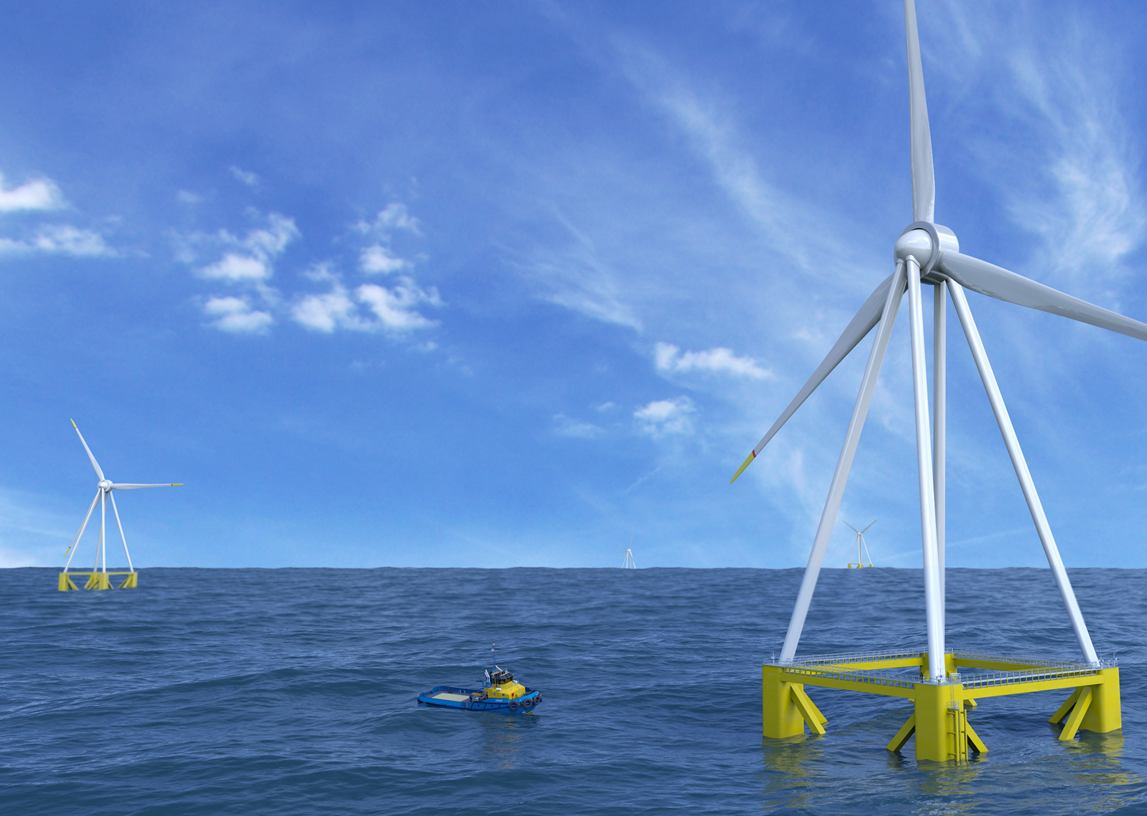Market Overview
WIND POTENTIAL
A powerful resource
Fixed-bottom offshore wind industry is now mature and cost-efficient. However, bottom-fixed wind turbines can only be installed in shallow waters (40 m max). This is an exception on earth and plentiful seafronts have a abrupt sea bed. On the contrary, floating offshore wind turbines make it possible to unlock the vast potential of deep sea areas and take advantage of more powerful winds. According to Carbon Trust, the technical potential is 4,000 GW in Europe and 500 GW in Japan.

A GROWING MARKET
More than 10 GW installed in Europe by 2030
Representing at least a 15 B€ annual market between 2020 and 2030, floating wind turbines should reach a CAPEX of 2 M€/MW by 2030. These wind turbines will produce twice as much energy as those installed on land and five times more than solar panels. Installing 25GW between 2025 and 2050 on a 1% of its metropolitan seas, France could secure 25 % of its electricity needs. This requires the manufacturing of 1 GW per year, that is to say 67 wind turbines of 15 MW and 224.000 tons of steel. Such an opportunity provides a new and sustainable economic activity to 1-2 shipbuilding yards, employing 5.000 people in the entire value chain.
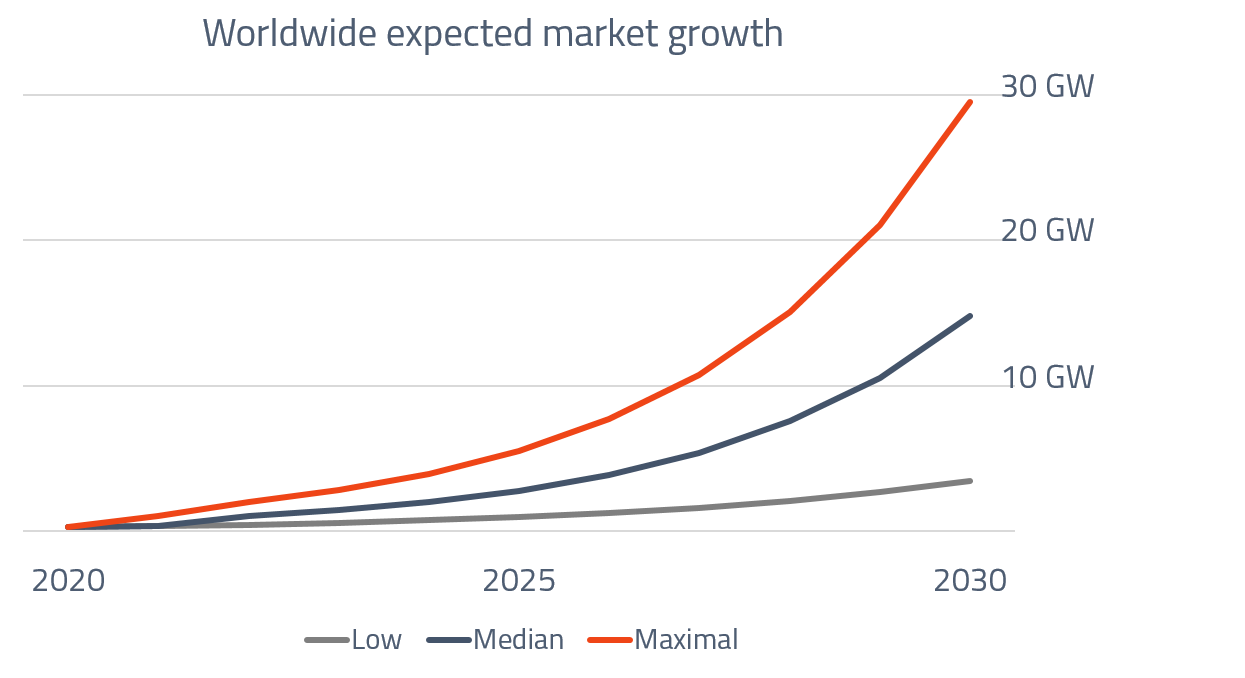
A COST-EFFECTIVE CONCEPT
A 35 €/MWh LCoE by 2030
Eolink wind turbines are designed to afford extreme storm events. The mechanical lifetime of the structure is much greater than 30 years. Wind turbine manufacturing, from steel cutting to connection to grid, is less than 3.5 M€/MW on the first 5 MW prototype. A bigger machine with an industrialized manufacturing process will lower this cost to less than 2 M€/MW by 2030 while increasing electricity production. Consequently, LCoE will reach 35 €/MWh by 2030, giving a final cost of 0,145 €/kWh to the end user.
Eolink's floating wind turbine power is expected to be at least 15 MW by 2027 and even 20 MW by 2030.
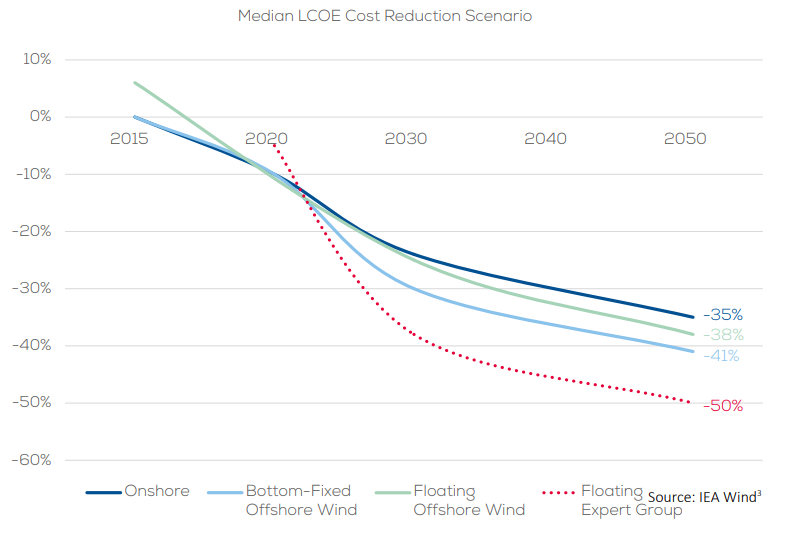
PROVEN TECHNOLOGIES
90% proven technologies from offshore and naval industries
Eolink takes advantage of the oil and gas industry's 50 years' experience to build a reliable product.
Eolink’s floating wind turbine is composed of well-known components from naval industry. The floating structure is based on stiffened steel sheets structure while the single point mooring system is an adapted version of CALM boys used in the oil and gas industry. The turbine and the blades, taken from conventional turbine suppliers, are slightly adapted to be connected on both sides of the turbine’s fixed shaft.
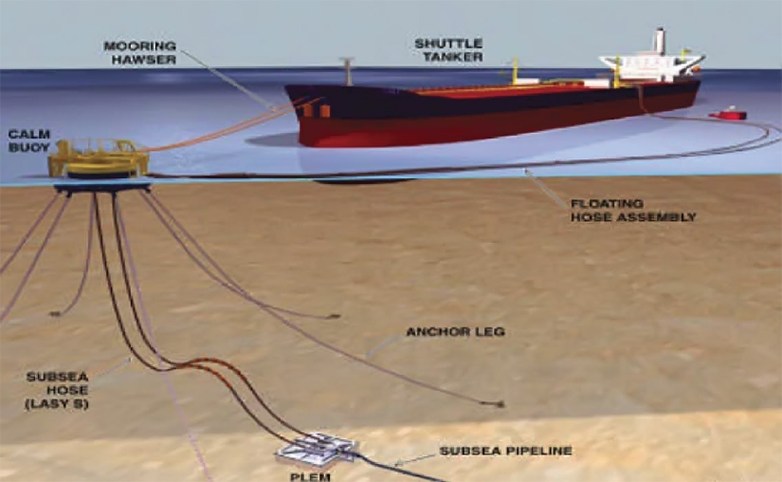
© EPCM
A PROMISING COMPANY
A 5 years expertise
Eolink has been developing from scratch its floating wind turbine concept, since 2015. Together with the French Research Institute for Exploitation of the Sea, the company demonstrated the economic advantages of the patented structure. Results were based on both in-house numerical modelling and 1/50th prototype. Three years later, in 2018 a 1/10th scale prototype was launched in Brest for a 2 year testing period. By demonstrating the dynamic of such an architecture in a representative environment, the prototype, fully designed internally by 4 engineers, successfully validates the concept potential. In 2018 the company was assessed TRL 5 by carbon trust, becoming the 7th successful tested semi-submersible wind turbine worldwide.
Nowadays, benefiting from its successful results, Eolink’s team of 15 engineers is working on a 5 MW prototype in order to reach a 3:4th scale of a 12 MW wind turbine. This will lead the company to a TRL7-8 by 2021. The company already published 2 patents.
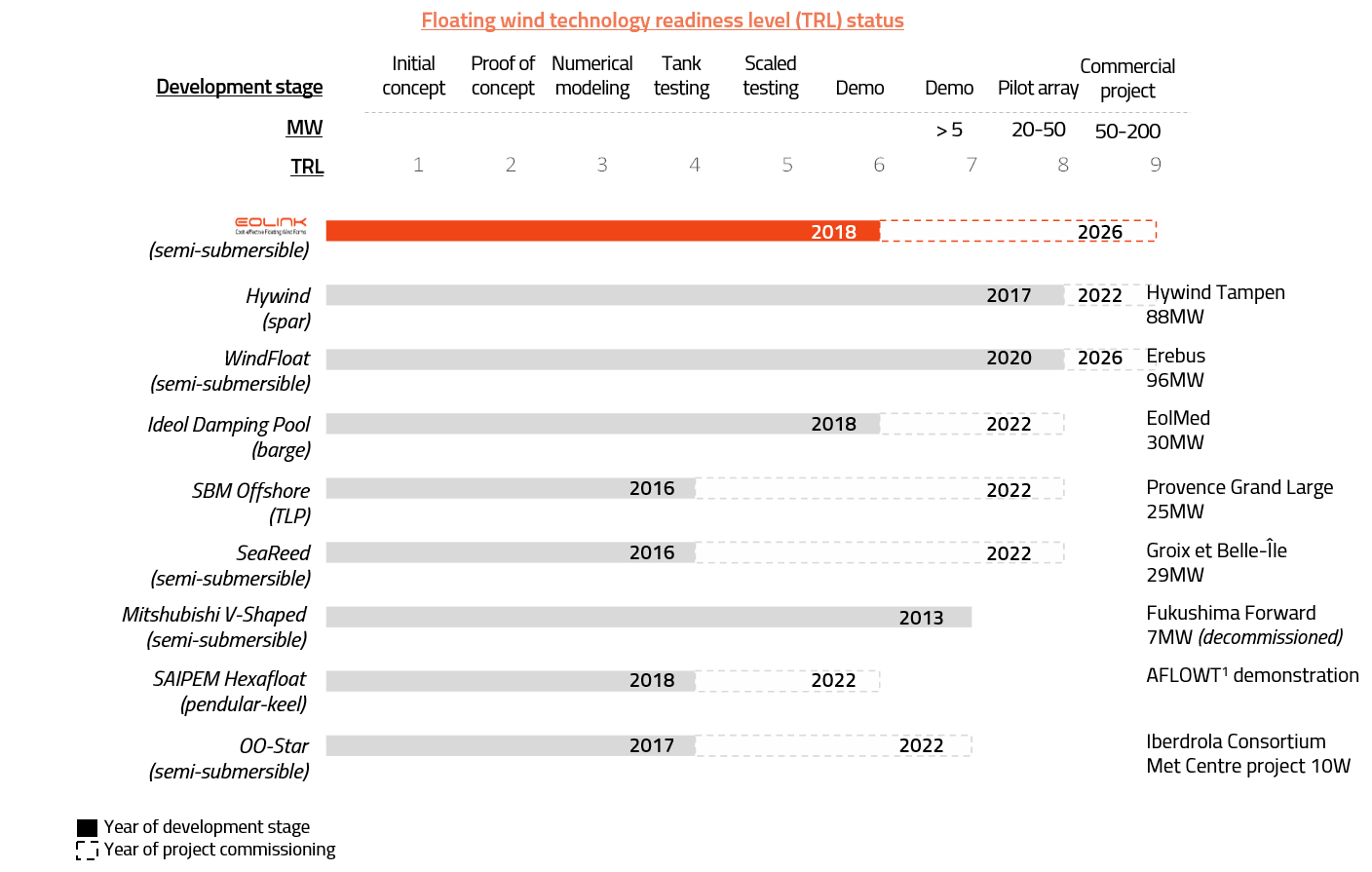
ENERGY TRANSITION
A solution for the future
To reach zero net emission ambitions, Europe expects offshore wind capacity to reach 240-440 GW by 2050. In this transition, floating wind turbines are expected to be one of the most powerful and steady sources of blue electricity because of the following statements.
Wind energy tackles efficiently sustainable development issues. The technology has a high rate of energy produced per energy invested in the machine manufacturing (EROEI: 16). As a comparison, solar energy doesn’t reach more than 4, and suffers a bigger impact on the environment from a life cycle point of view.
Eolink’s floating wind turbine is the only technology allowing fast enough deployment of renewable energy to reach European ambitions. Indeed, massive production is possible thanks to shipyard manufacturing and easy commissioning at sea.
Joining Eolink's capital is one of the best ways to promote sustainable development.
